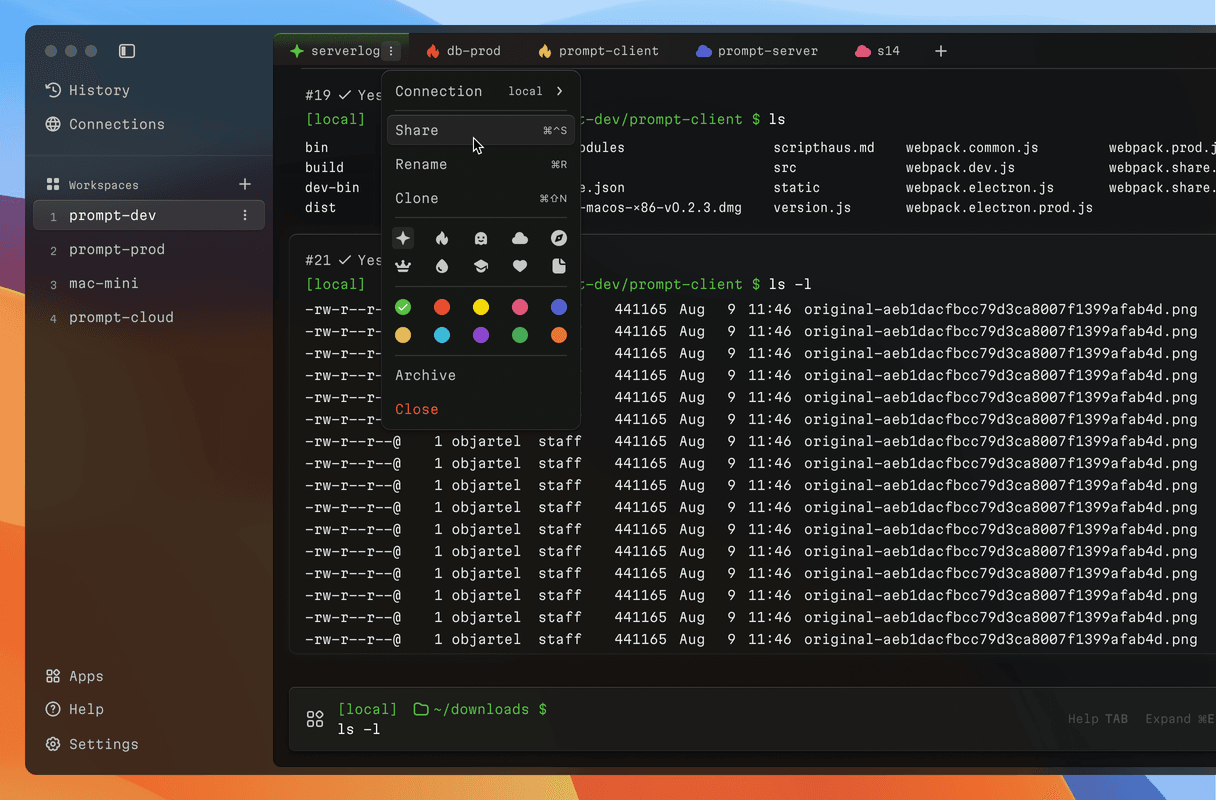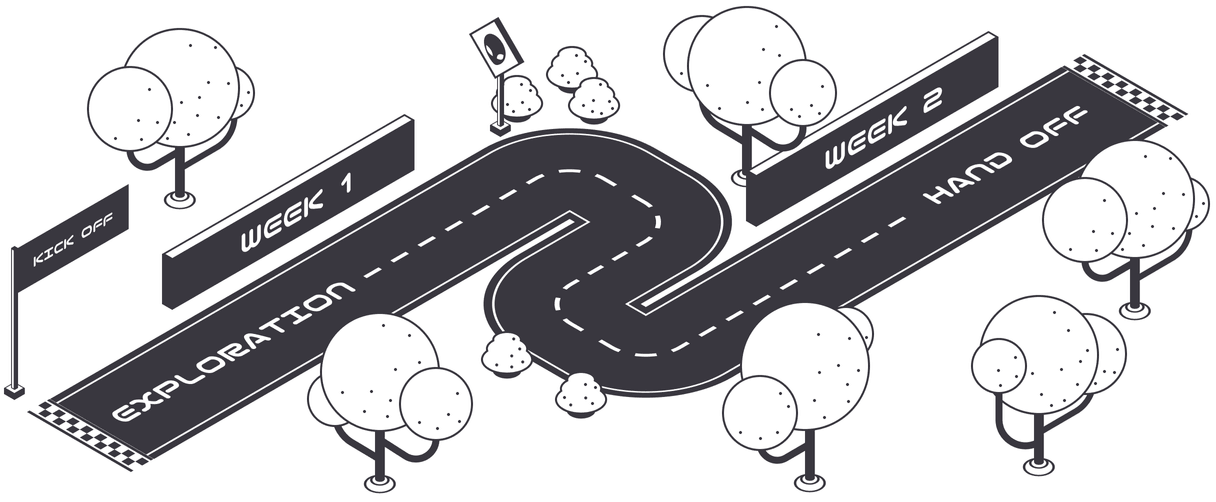MVPs, prototypes, results: how to win with a Martian Design Sprint

Google originally introduced the Design Sprint methodology back in 2010. Since then, Evil Martians have customized that original framework to perfectly suit our clients’ needs. Today, the strength of the Martian Design Sprint lies in delivering rapid results that significantly benefit our customers’ businesses, like launching MVP development with the creation of initial designs. This is the ideal way to kickstart the entire development process, bring founder ideas to life, and give Evil Martians a test drive.
Thanks to the design sprint, our customers have seen significant results: raising new investment funds, pivoting their business, and even winning design awards. Let’s get a bird’s eye view of everything, including some real world case studies.
Audience and benefits
The design sprint is versatile, and benefits everyone from founders with just a sketch of an idea to early-stage startups who need to launch an MVP quickly. It’s even appropriate for growing companies with established market fits.

A. Pre-seed: turning ideas into prototypes
During a design sprint dealing with a case where the focus begins with a raw idea, our product designers will assist with shaping the idea, creating the first designs and turning them into an interactive prototype that will reflect the reality of your vision.
If you’re fundraising, this is a huge asset: imagine having a prototype, available via a typical web link, that looks and functions like a real app; this is much more persuasive than relying solely on a pitch deck.
Additionally, this step plays a crucial role for founders (especially first-timers) because it gives them an initial glimpse into their future product. This can be a moment of revelation: the idea, previously confined to the imagination, assumes a tangible form for the first time.
For founders, this could even lead to reconsidering the foundations of the idea—and then better tailoring it for the market.
B. Seed: kicking off the MVP
The key to success is determining the product’s essence: the core features that matter to users so much that they’re willing to pay or switch from a competitor. Often, this is the first step for the Martian design team; we assist founders with figuring out these core features and start designing the MVP while prioritising them. Additionally, this prioritizing work creates the basis of the MVP launch roadmap.
And the result? Detailed, high-fidelity designs for the key user flows, ready for the engineering team to transform into a working product. From the outset, we emphasize top-notch UI and meticulous detail, crucial for product-led growth startups.

The revamped user interface for the Wave Terminal, originating from a design sprint
C. Post-PMF: fostering growth
For companies moving from good to great, the design sprint sets the foundation for a growth-focused framework. Acting as an extended product+growth team, we use a cycle of hypothesis, feature shipment, and data analysis to ensure that developments truly address user needs.
The motto of YC is “Make something people want.” Therefore, finding and solving user pain points is the key to a successful startup. Although hearing their feedback might be tough, talking to end users is the only way to uncover insights about their struggles.
Martian product designers can either assist you or conduct interviews with early adopters on your behalf, collect and analyze the data, and share the findings with the product team. We can then help you transform these insights into product hypotheses, complete with accompanying metrics for future build-ship-measure cycles.
Bonus for every stage: a landing page that converts
Further still, we can also use the design sprint to either create or refine a product’s landing page. This process involves applying best practices in product demonstrations, user experience, accessibility, and clear copywriting, all aimed at developing a landing page that efficiently converts visitors into signups.
Case study: Tines
When Tines first approached us, they had an MVP where a security engineer used a standard web form to select options and create a workflow. That solution helped the Tines team validate their core idea, however, for expansive growth, the UI needed an upgrade.
So, during the design sprint, our Martian product designer proposed a workflow builder-style UI that included drag-and-drop functionality, allowing users to quickly place agents on a canvas, connect them via mouse cursor, and edit their properties on the fly. This innovative idea marked a significant improvement and still remains a fundamental part of Tines’ product.
The workflow builder-like UI we suggested to Tines during the design sprint
Rapid results: the design sprint in action

Most design sprints take two weeks. During a kickoff call, the customer and the Martian team narrow down the scope to determine the set of features or changes that are both most valuable for the business at the current stage and which can be completed in two weeks. Following the MVP mindset, the Martian team guides the customer through this process. Ready, set, go!
The first few days (typically about two) are dedicated to exploration and research. Depending on the specific scope, this may include elements such as user research, competitive product analysis, or creating a mood board. The goal is to define the boundaries of potential solutions. After discussing the results of this exploration , the customer and the designer proceed to implement the ideas they’ve discovered.
For the remainder of the two weeks, the customer and the designer have synchronization calls every two days to ensure work is heading in the right direction. Before the sprint concludes, the Martian designer collaborates with the engineers to ensure that the designs align with any technical constraints, and to facilitate a smooth handoff.
The resulting artifacts usually consist of design screens that comprehensively depict various states of the feature, specifications to aid in handing off the designs to engineers, the essential design system, and a plethora of new ideas that emerged during the process. The primary value in this scenario is that the engineers receive everything they need to begin their work.
Ultimately, the design sprint sets the entire development machine into motion.
Case study: HTTPie AI
HTTPie’s early days began with a Martian design sprint and their HTTPie AI assistant—a revolutionary feature within the main product that lets users create API requests using natural language—likewise kicked off with one. And what a sprint it was!
In just one week, our product designer, working closely with founder Jakub Roztocil, finalized all the designs, complete with interaction states and engaging animations.
Over the next two weeks, the team developed and deployed the feature. After one more week of fine-tuning, it launched and secured the 4th product of the day spot on Product Hunt!
HTTPie AI assistant, built into HTTPie for Web & Desktop, uses state-of-the-art artificial intelligence to increase your productivity when testing and talking to APIs
What comes next?
At the next stage, the development team evaluates the project and gives a balanced estimation about the upcoming workload and budget.
Here, the designer drills through the design details and features and puts on the design system’s final touches. The client will better understand the product’s future, and the development team will set up the building environment, shape the project architecture, and prepare the necessary tools.
Want to start an Evil Martian Design Sprint with our team? Drop us a line, tell us about your mission and the pains that come with it, and we’ll figure out how to help you get results and develop your idea faster.


